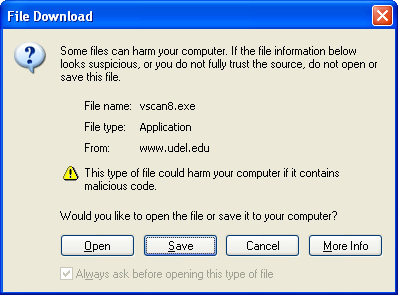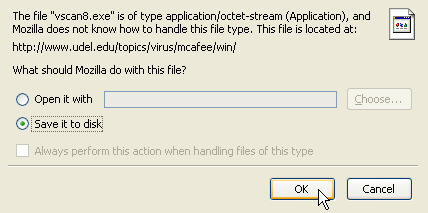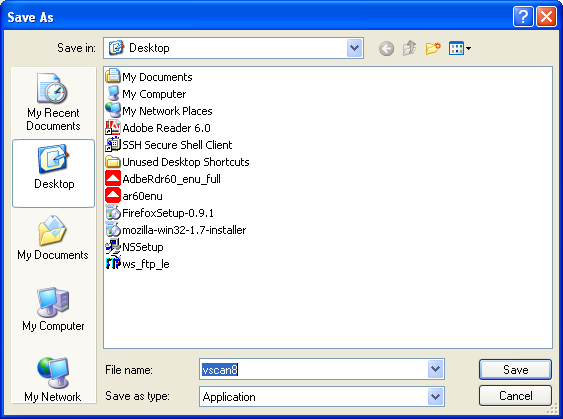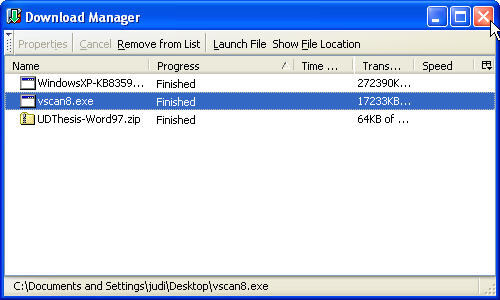IMPORTANT NOTE
This version of McAfee is ONLY for Windows 2000 and XP systems. If you have a Windows Vista computer, follow this link.
The University of Delaware has obtained a site license for McAfee anti-virus software. The license permits the use of this software on all University-owned computers and on all computers owned by employees and students of the University.
IMPORTANT NOTE
This version of McAfee is ONLY for Windows 2000 and XP systems. If you have a Windows Vista computer, follow this link.

If you use the Mozilla browser, you will see a screen similar to the following:



![]()
After you have installed the UD version of VirusScan, your computer will be scanned for viruses every Wednesday, if your computer is on at about noon. To see the results of automatic scans, you can view the McAfee log files.
In the future, if you need to run Scandisk or Disk Defragmenter after you have installed the McAfee anti-virus software, you'll need to disable VShield before running these programs.
VShield may also interfere with the installation process for some programs. Refer to individual program documentation before installing any new software. If the documentation indicates that resident virus-checking should be off during the installation, follow the previous directions for disabling VShield. After you have installed the other software, make sure that you re-enable VShield.
With the UD-customized version of McAfee's VirusScan software, your computer will automatically check for updates when the software first senses an Internet connection (at system start-up for computers with a high-speed connections; upon dialing into UD or another ISP for computers with a phone modem). In addition, if your system is on and connected, it will check for updates daily at 5:00 a.m.
If you need to update McAfee's software manually, follow the directions in the McAfee-provided help files.
McAfee Anti-Virus Software for Windows Computers
IT Help Center
Anti-Virus Questions or Comments
University of Delaware Home Page
Last updated: October 3, 2007
Copyright © 2002-2007, University of Delaware